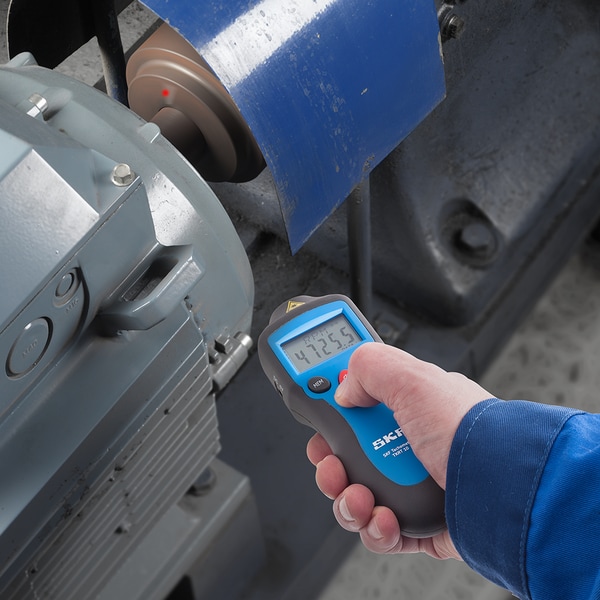Exactly How a Tachometer Helps Screen Engine Wellness and Performance
Exactly How a Tachometer Helps Screen Engine Wellness and Performance
Blog Article
Discovering the Functions and Advantages of a Tachometer: A Comprehensive Guide for Car Fanatics
From providing real-time data on engine speed to helping in enhancing equipment shifts, the tachometer offers as more than simply a dial on the control panel. Its complex features not only boost driving experience however likewise play a crucial function in maintaining engine wellness and effectiveness.
Understanding the Basics of a Tachometer
In the world of vehicle instrumentation, comprehending the fundamentals of a tachometer is essential for any kind of car enthusiast looking to look into the details of engine performance monitoring. A tachometer, frequently shown on the dashboard of a car, gauges the engine's revolutions per minute (RPM) This crucial tool provides real-time data on just how quickly the engine crankshaft is revolving. By keeping an eye on the RPM, vehicle drivers can ensure they are running within the ideal variety to make the most of efficiency and efficiency.
Tachometers normally have actually a scale marked in transformations per minute, with a redline suggesting the maximum speed at which the engine can safely operate (tachometer). This info is important for stopping engine damages and optimizing gear shifting for hands-on transmissions. Furthermore, tachometers can help in identifying engine issues such as misfires or a failing ignition system by finding irregular RPM analyses
Relevance of Keeping Track Of Engine Speed

The engine speed, determined in transformations per min (RPM), suggests exactly how quickly the engine's crankshaft is rotating. Monitoring engine speed is particularly essential during equipment shifts, as it helps vehicle drivers identify the ideal time to change equipments for smooth acceleration and effective gas intake.
In addition, tracking engine speed can likewise supply useful understandings right into the general health and wellness of the automobile. Unusual changes in RPM might indicate issues such as a clogged air filter, gas system issues, or even engine misfires. By detecting these abnormalities early through the tachometer analyses, vehicle drivers can resolve potential issues quickly, preventing more serious damages and costly repairs down the line. Overall, checking engine rate with a tachometer is a basic practice that can boost driving efficiency, extend engine life, and make certain a much safer and much more pleasurable driving experience.
Enhancing Efficiency Through Equipment Shifts
Appropriate gear shifting makes sure that the engine runs within its ideal power band, permitting for smooth velocity and enhanced gas economy. When shifting gears, it is crucial to pay interest to the engine rate suggested on the tachometer.

To achieve peak performance via equipment changes, motorists need to exercise smooth and timely shifts in between equipments, matching engine speed with road rate to harness the full possibility of their vehicle's powertrain.
Making Best Use Of Efficiency With a Tachometer
Understanding the art of gear shifting in high-performance lorries not just boosts driving experience however also plays an important role in taking full advantage of efficiency with a tachometer. tachometer. By paying close interest to the tachometer analyses, motorists can maximize their equipment changes to operate within the engine's most efficient array. When accelerating, changing equipments at the right RPM shown by the tachometer can stop the engine from overworking or underperforming, bring about boosted gas effectiveness and total efficiency
Additionally, a tachometer helps motorists avoid unneeded revving, which not only wastes fuel but also places unnecessary stress on the engine. Regularly keeping an eye on the tachometer while driving allows for smoother equipment shifts, reducing wear and tear on the transmission system in time.

Advanced Tips for Tachometer Application
To dig into sophisticated ideas for click to read tachometer utilization, consider integrating the use of shift lights. Shift lights are aesthetic indicators that brighten when it's time to shift gears based on engine revolutions per minute (RPM), permitting for seamless equipment modifications without frequently keeping an eye on the tachometer. By fine-tuning change points and setting advising limits, chauffeurs can optimize velocity and engine performance while reducing the threat of over-revving.
Conclusion
Finally, the tachometer works as a crucial tool for auto enthusiasts to keep an eye on engine speed, boost efficiency with equipment changes, and take full advantage of efficiency. By recognizing the features and benefits of a tachometer, chauffeurs can maximize their driving experience and lengthen the life-span of their vehicle. Making use of innovative pointers for tachometer usage can even more improve driving skills and overall performance on the roadway.
Report this page